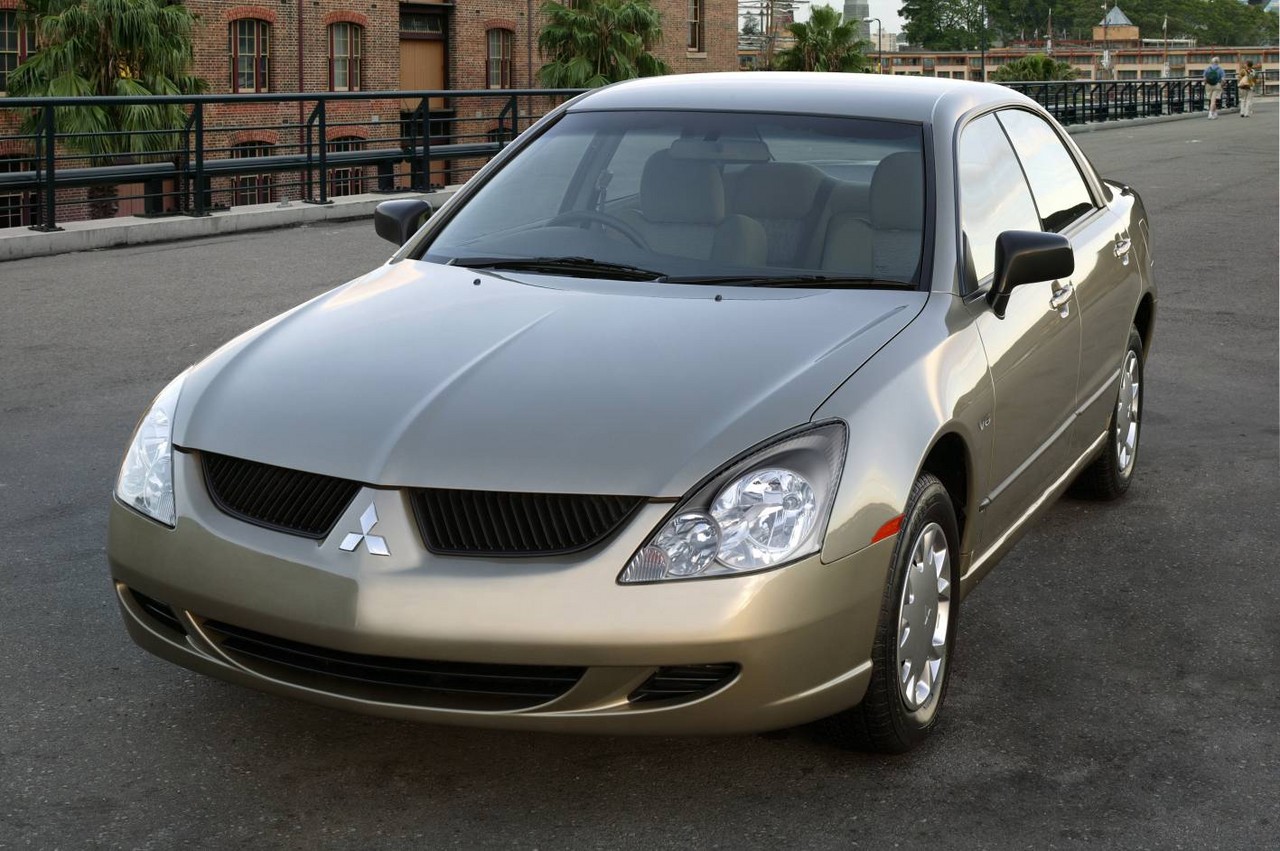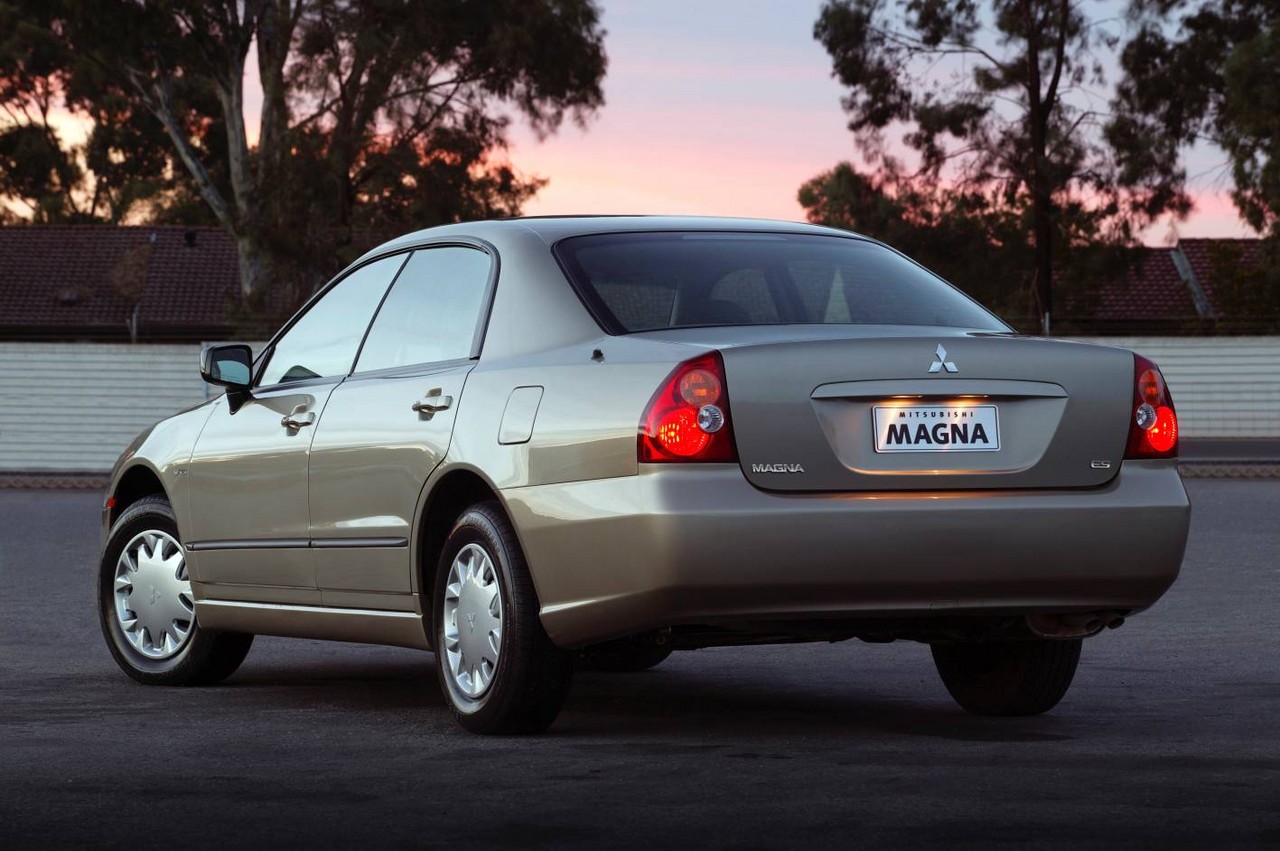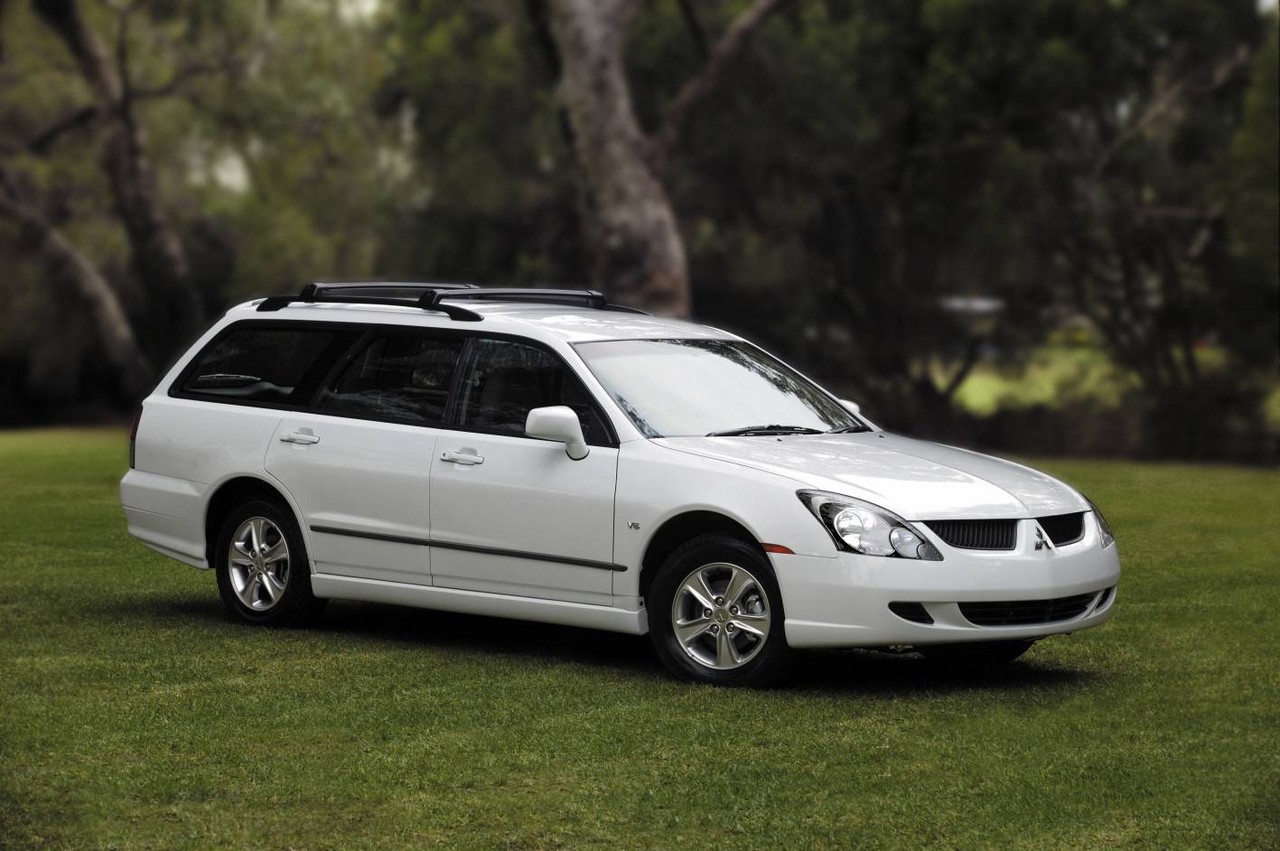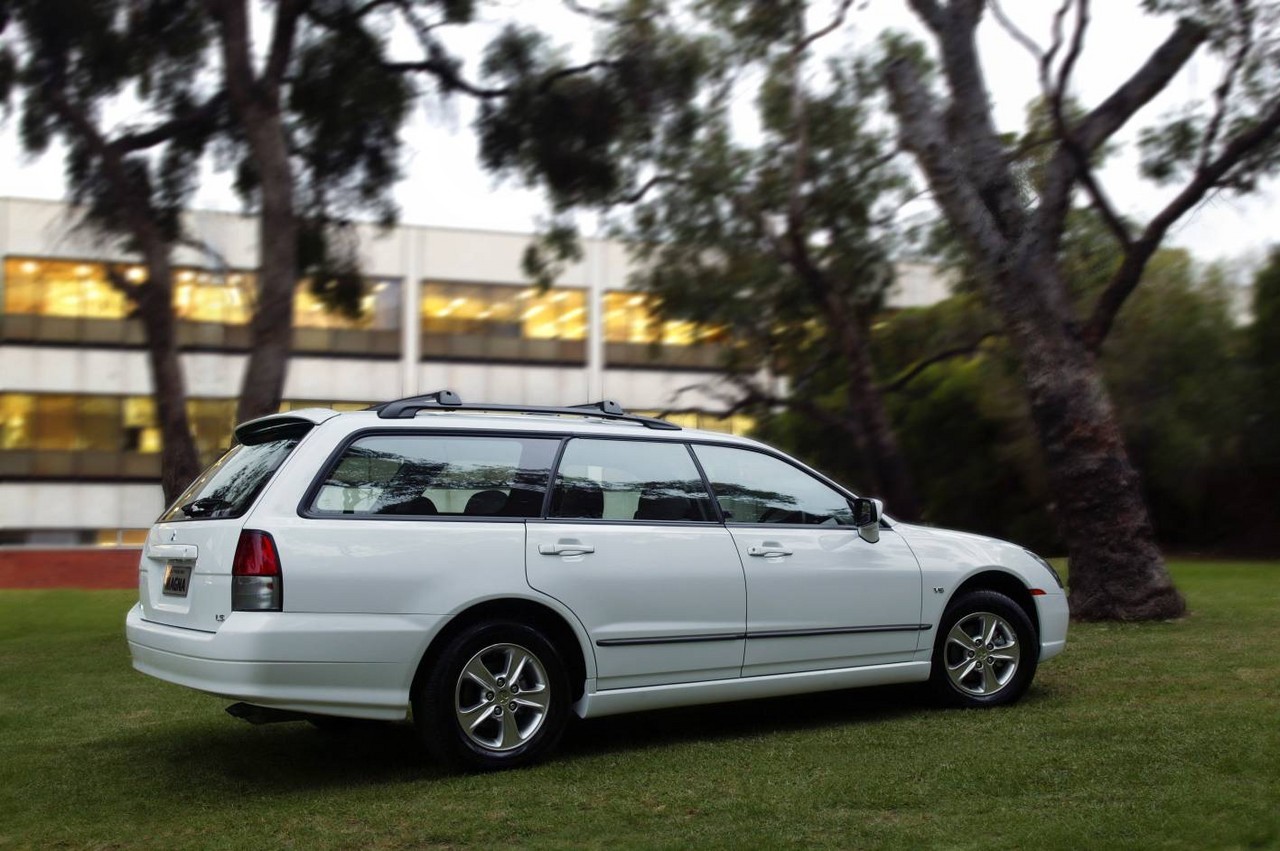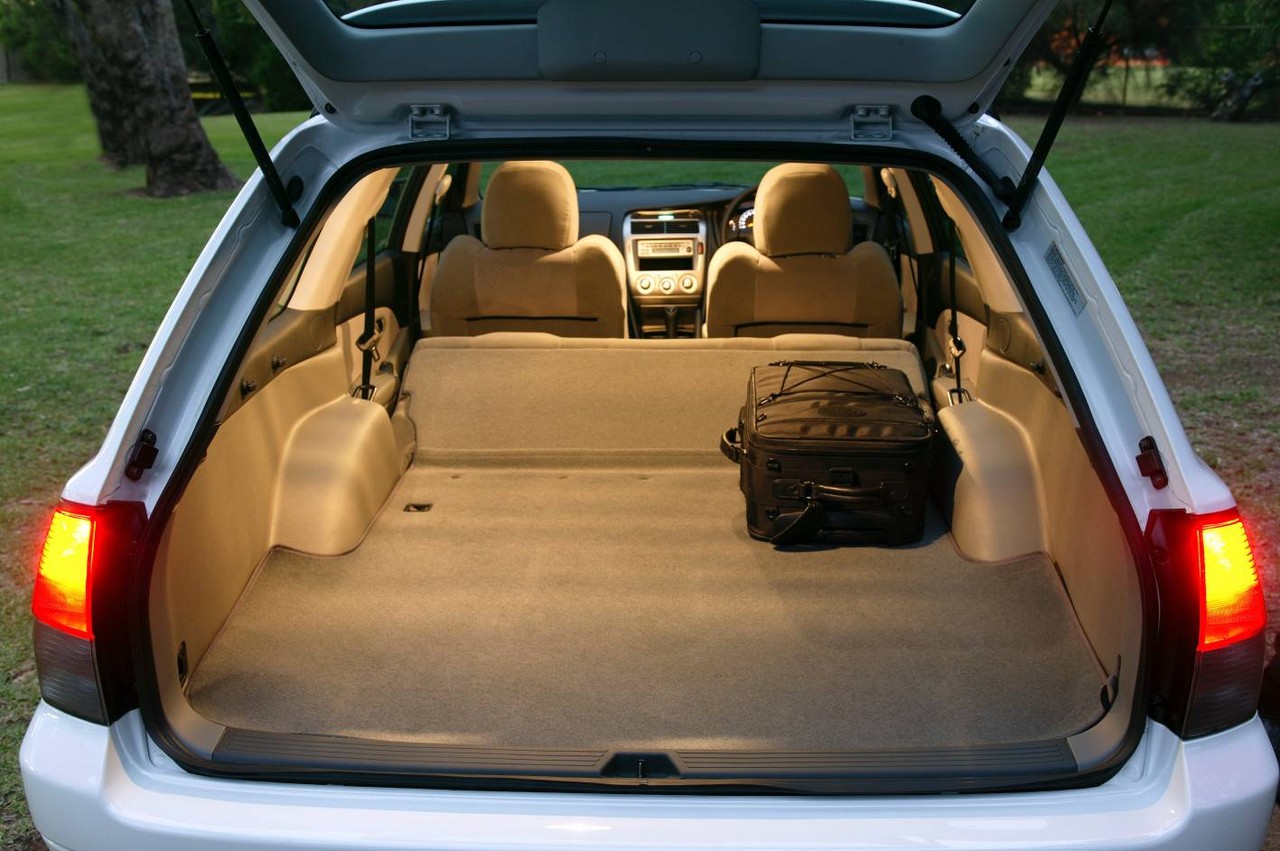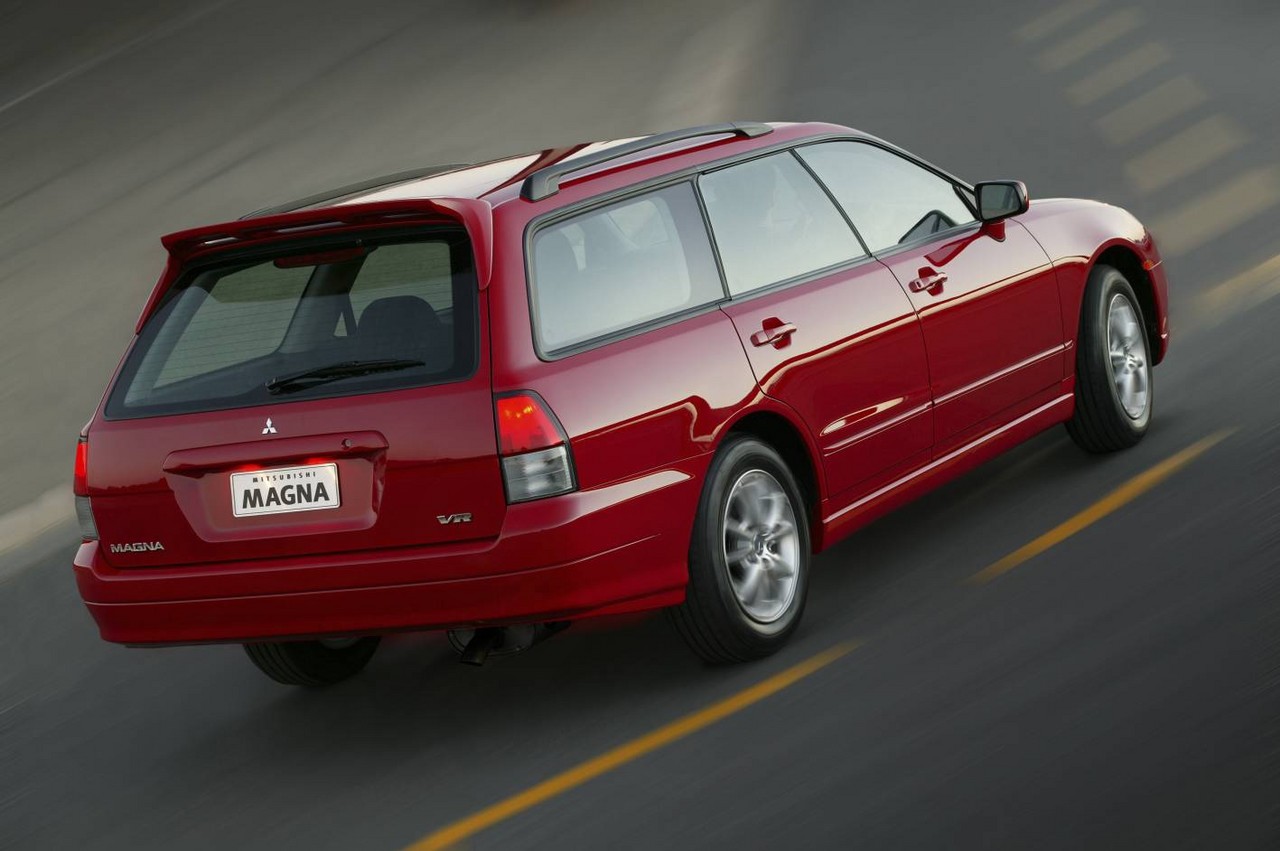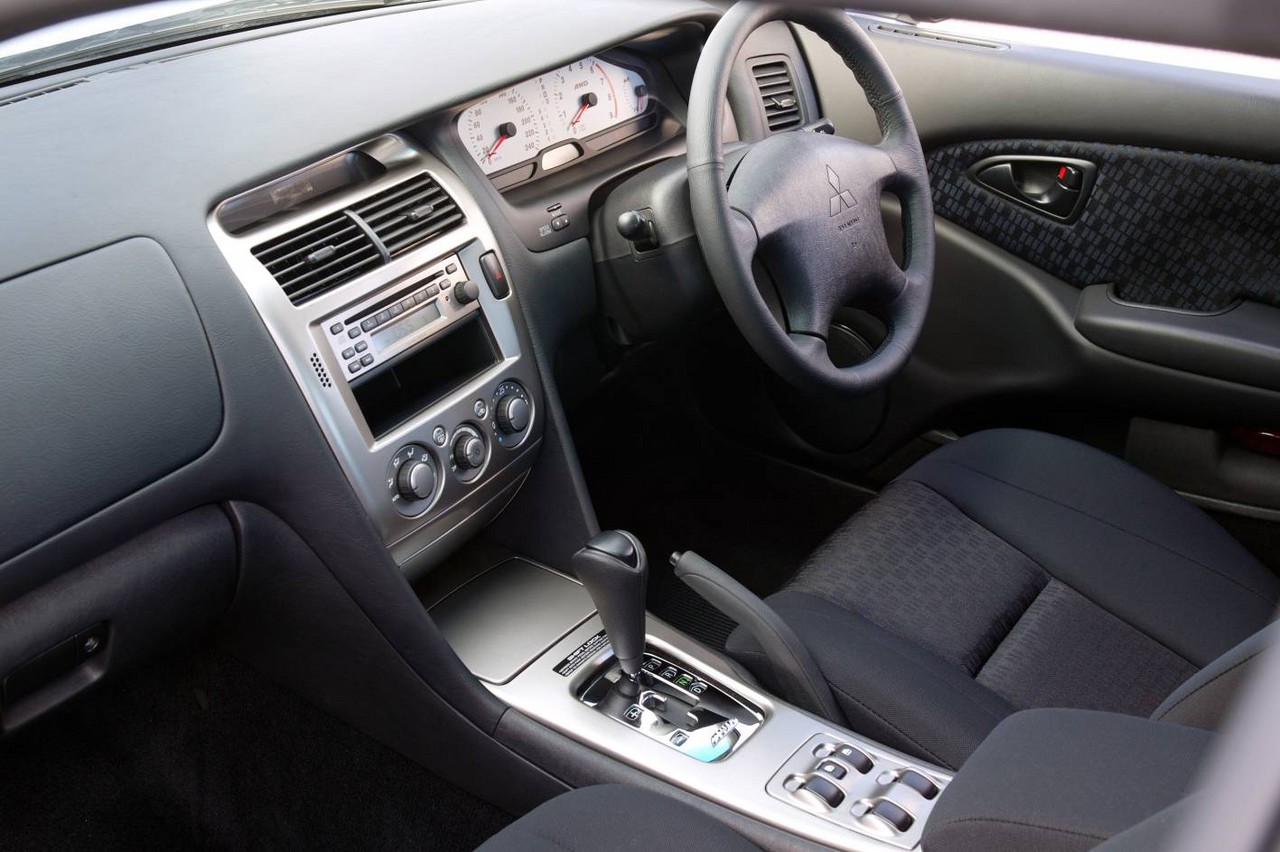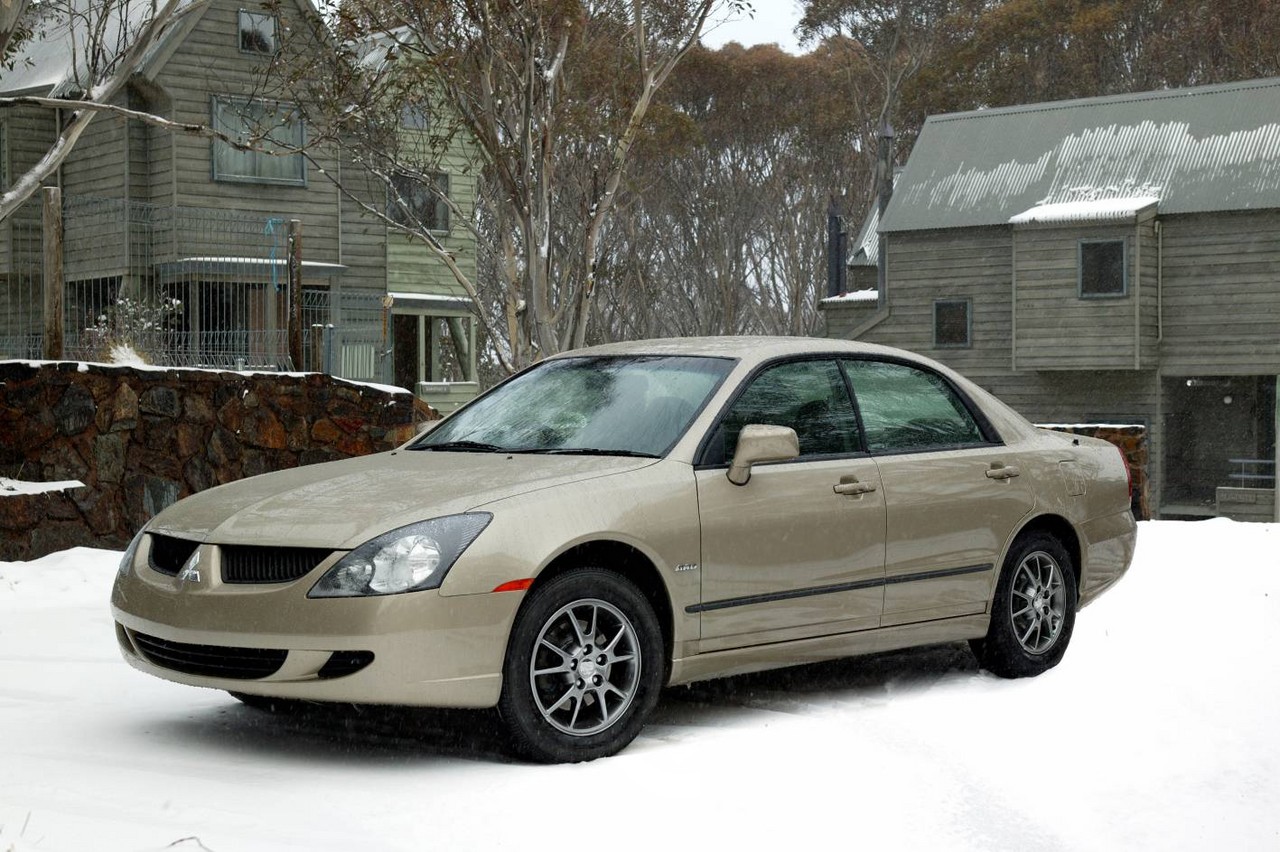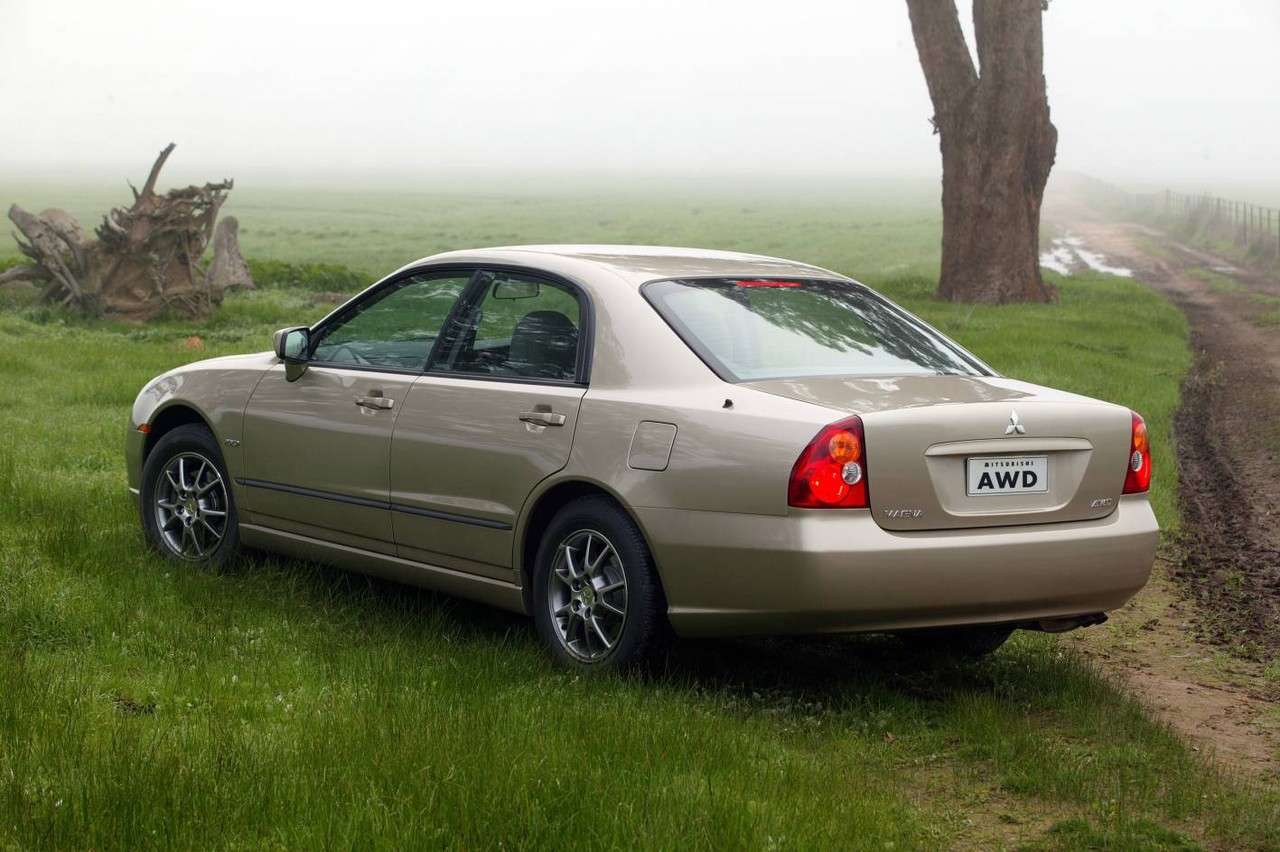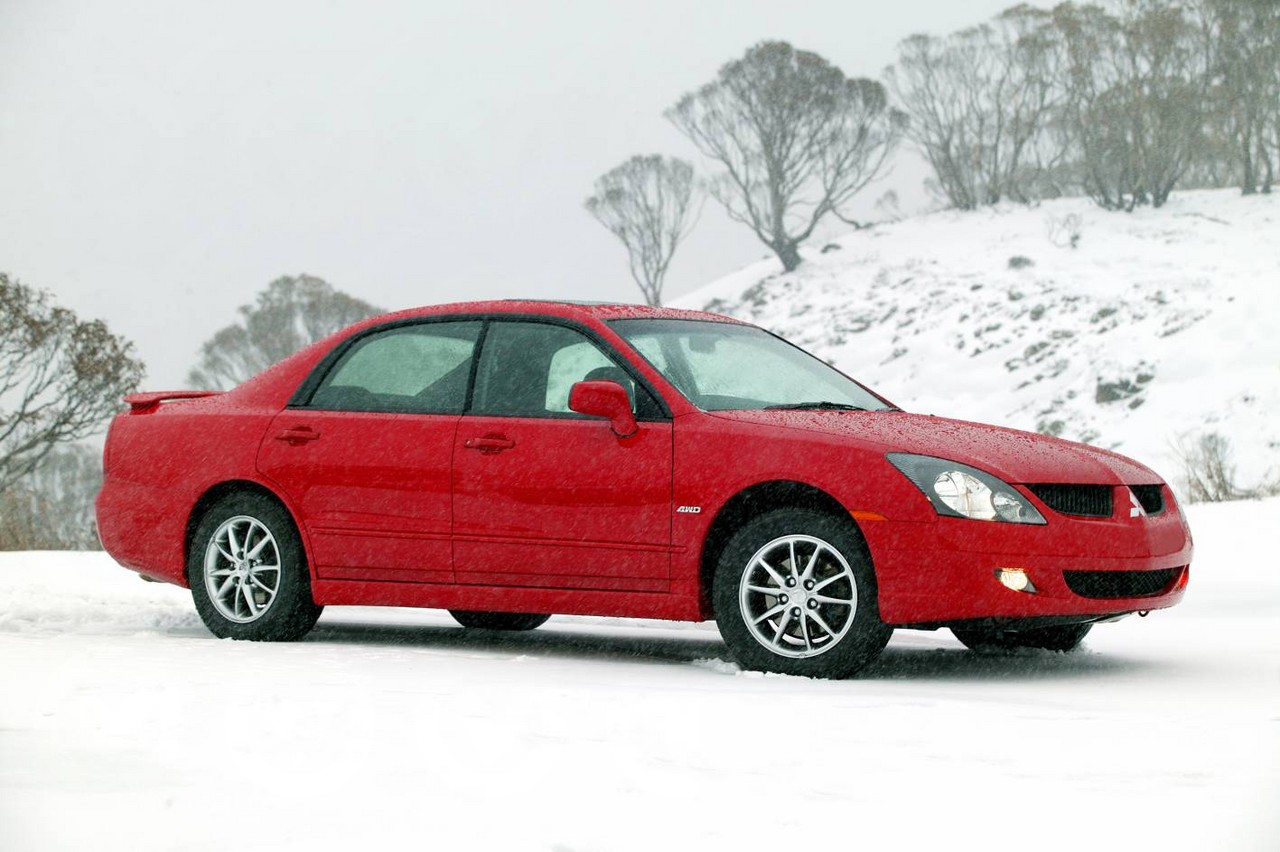
- Responsive and refined 3.5-litre V6 engine
- Intuitive five-speed automatic transmission
- Impressive ride/handling balance
- AWD Magna has engaging dynamics
- Quiet, well-insulated cabin
- Well-weighted, accurate steering
- Standard driver’s seat is oddly shaped
- Steering wheel lacks reach adjustment
- For AWD Magnas, driveline vibration during acceleration
- Large turning circle
- Reports of exhaust drone; for sports variants, loud exhaust note
Overview
Released in July 2003, the Mitsubishi TL Magna was available as a sedan or wagon. Manufactured at Clovelly Park, Adelaide, the TL Magna was available with either 3.5-litre V6 petrol or dedicated LPG engines. Both the petrol and LPG 3.5-litre 6G74 engines, however, had a cast iron block, single overhead camshaft, four valves per cylinder and a compression ratio of 9.0:1. Furthermore, the TL Magna was available with front- and all-wheel drive (see ‘QuadTec AWD system’, below, for the latter).
The TL Magna range initially consisted of seven variants: ES, AWD, LS, VR, VR AWD and VR-X. In June 2004, however, the VR variants were discontinued and a VR-X AWD was introduced; a limited-run Solara was also released in March. As per the table below, the TL Magna was available with four- or five-speed automatic transmissions or a five-speed manual unit.
Changes from TJ Magna
Compared to its TJ Magna predecessor, the TL Magna could be identified by its divided grille with Mitsubishi logo, triangular headlight assemblies, new bumpers, boot lid and rear garnishes. Inside, there was an updated instrument binnacle and new interior trim fabrics and materials. Furthermore, the audio unit head was upgraded and re-shaped front seats increased rear legroom.
The TL Magna also had a stronger structure due to thicker panels, the use of high strength steel, an additional side intrusion bar in the front doors and a steel panel behind the rear seats. Steering rack revisions, spring and damper rate changes and, for sedans, rear stabiliser bars were also introduced to improve handling.
Dimensions and suspension
The TL Magna sedan was 4860 mm long, 1785 mm wide, 1435 mm tall and had a 2722 mm long wheelbase. Relative to the sedan, the wagon body was 14 mm shorter (at 4846 mm) and 62 mm taller (1497 mm).
The TL Magna sedan had MacPherson strut front suspension with lower A-arms and an anti-roll bar and independent, multi-link rear suspension with upper and lower control arms. The TL Magna wagon, however, had a tubular rear axle with four trailing arms and a lateral locating rod.
| Body | Variant | Engine | Trans. | Peak power | Peak torque |
|---|---|---|---|---|---|
| Sedan | ES, LS |
3.5-litre LPG V6 | 4sp auto | 143 kW at 5000 rpm | 296 Nm at 4000 rpm |
| ES | 3.5-litre petrol V6 | 4sp auto, 5sp man. |
155 kW at 5250 rpm | 316 Nm at 4000 rpm | |
| LS | 3.5-litre petrol V6 | 4sp auto | |||
| VR, VR-X |
3.5-litre petrol V6 | 5sp auto, 5sp man. |
163 kW at 5200 rpm | 317 Nm at 4500 rpm | |
| AWD | 3.5-litre petrol V6 | 5sp auto | 154 kW at 5000 rpm | 310 Nm at 4000 rpm | |
| VR AWD, VR-X AWD |
3.5-litre petrol V6 | 5sp auto | 159 kW at 5500 rpm | 318 Nm at 4000 rpm | |
| Wagon | ES, LS |
3.5-litre petrol V6 | 4sp auto | 155 kW at 5250 rpm | 316 Nm at 4000 rpm |
| VR | 3.5-litre petrol V6 | 5sp auto | 163 kW at 5200 rpm | 317 Nm at 4500 rpm |
QuadTec AWD system
Derived from the Japanese AWD Diamante and Lancer Evolution VI, the full-time four-wheel drive system featured an open front differential, a viscous coupling centre differential and a mechanical plate-type limited slip rear differential. The system provided a default 50:50 front/rear torque split, but could transfer torque between the front and rear axles and between the rear wheels in the event that traction was lost.
Safety equipment
Standard safety equipment for the TL Magna included dual front airbags, front seat-mounted side airbags, ABS, electronic brake force distribution and front seatbelts with pretensioners and load limiters. Furthermore, traction control (Mitsubishi’s ‘Slip Control’) and ‘Trace Control Logic’ were standard on all automatic models except the ES variant and AWD models. While traction control (Mitsubishi’s ‘Slip Control’ reduced engine power to reduce front wheelspin under acceleration, Trace Control would reduce power if the inputs indicated that the driver was driving too quickly or aggressively through a corner. However, the Trace Control system relied on inputs from steering wheel angle, throttle position and wheel speed rather than lateral or longitudinal sensors.
Brakes
The standard braking package for the TL Magna consisted of 276 mm ventilated front brake discs and 258 mm solid rear discs (both with single piston calipers). The AWD models, however, were fitted with 294 mm ventilated front discs with two-piston calipers and 284 mm ventilated rear discs with single-piston calipers.
ANCAP crash testing
In ANCAP crash testing, the TL Magna received a three star adult occupant protection rating with a score of 22.19. In the offset crash test, protection from serious chest and leg injury was marginal for the driver. In the side impact test, protection from serious chest injury was also marginal for the driver, despite the side airbag deploying.
Features: Magna FWD
Standard features for the Magna ES included a six speaker sound system with CD player, climate control air conditioning, cruise control, a six-way power adjustable driver’s seat, remote central locking, power windows and mirrors, a tilt adjustable steering wheel, power antenna, 12 volt power outlet, trip computer, an alarm and immobiliser.
The Magna LS added 15-inch six-spoke alloy wheels and an eight speaker sound system, while the Magna VR was further equipped with 16-inch ten-spoke alloy wheels with 215/60 R16 95H Bridgestone Turanza tyres and Koni suspension, front fog lamps and a leather-wrapped steering wheel and gearshift.
The Magna VR-X was differentiated by its 17-inch five-spoke alloy wheels with 225/50 R17 Bridgestone Grid II tyres, ten speaker sound system with six-stack CD player and body kit.
Features: Magna AWD
Compared to the ES, the Magna AWD featured 16-inch ten-spoke alloy wheels with 215/60 R16 Bridgestone Turanza tyres, a leather-wrapped steering wheel and gearshift and body-coloured mirrors and side splash protectors.
Compared to their front-wheel drive counterparts, the VR AWD and VR-X were fitted with 16-inch alloy wheels with 215/60 R16 Bridgestone Grid II tyres, with ten-spoke wheels for the VR and ten-spoke shadow-chrome wheels for the VR-X AWD.
2004 Magna Solara
In March 2004, a limited-run Solara variant was released. Solely available as a sedan, the Solara was based on the LS, but distinguished by its 16-inch sparkling silver alloy wheels, perforated black leather-wrapped steering wheel and map lamps. Visually, the Solara could be identified by its low-line decklid spoiler, body-coloured side protection mouldings and mirrors and ‘Solara’ badging.
2004 Magna VR Limited Edition and VR-X Limited Edition
In March 2004, Limited Editions were released for the VR and VR-X. Compared to their standard counterparts, the VR and VR-X Limited Editions were fitted with 17-inch Enkei alloy wheels with 225/50 R17 Pirelli P6000 high performance tyres and Koni Ralliart-tuned dampers, perforated black leather-wrapped steering wheel and tinted windows. Visually, the Limited Editions could be identified by their body-coloured head- and fog-light bezels, body-coloured upper grille (with chrome surround for VR), silver coloured lower grille (body-coloured for VT) and contrasting painted rear bumper insert.
June 2004: Magna update
In June 2004, the Magna VR and VR AWD were discontinued and the VR-X AWD was introduced. Visually, the updated VR-X variants could be identified by their body-coloured headlight bezels, platinum-coloured rear bumper insert, extended chrome exhaust outlet and modified bodykits. Inside, there were new black cloth trim, titanium-coloured centre console highlights and a black leather-wrapped steering wheel, gearshift and handbrake.
Related links
